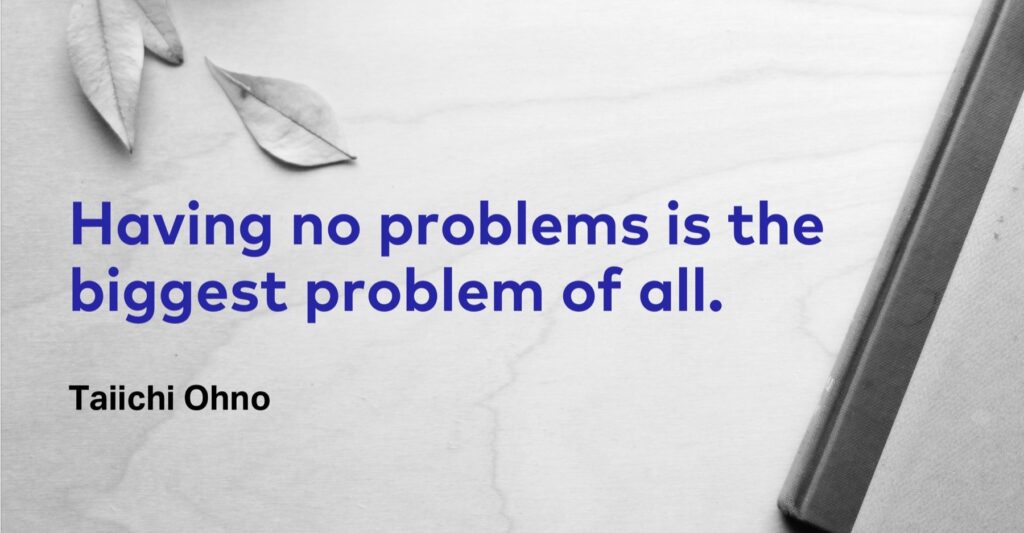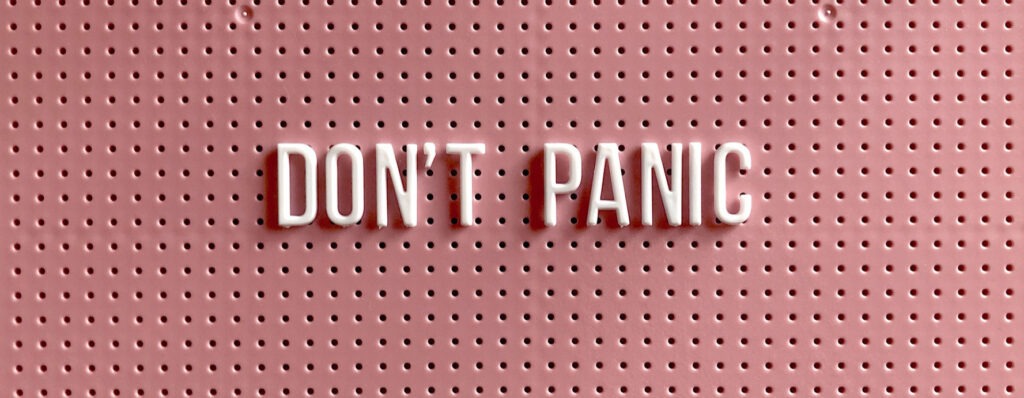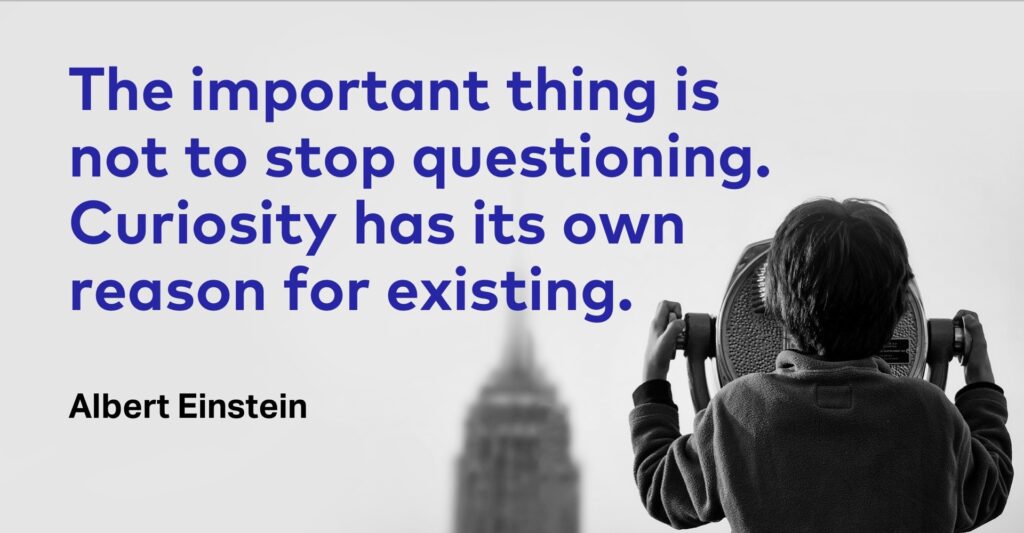Table of Contents
Leaders talk a lot about business disruption. We all know fast and profound change is necessary, especially in technology. But why are significant transformations easy to start and so hard to follow through? I found my answer in the most unlikely of places – the Japanese philosophy of Kaizen.
What is Kaizen
The Japanese word Kaizen is a compound of Kai and Zen. While Kai refers to change, Zen is a Buddhist school of thought that combines mindful awareness with presence. Zen lays down principles to constantly improve ourselves, to change for better of either continuous or philosophy in Japanese dictionaries and everyday use.
“The journey of a thousand miles
begins with a single step”
The idea has its roots in post-World War II Japan. Back then, the world was changing a lot, and industrial transformations called for a new approach to management. The Japanese auto industry, in particular, struggled with low productivity. Morale was low, and equipment was old. Toyota was inspired by Ford, its American competitor who still enjoyed high-paced yields. They brought in the engineer and businessman Taiichi Ohno to develop a solution.

Ohno looked carefully at the production floor. He noticed that the primary problem is wastage understood as overproduction, waiting time or inefficient processing.
Big, bold innovations are alluring. Think of “disruptive” or “game-changer”. However, the Japanese are oriented towards processes that can bring results. That’s why they know the power of hundreds of minor improvements, even if they don’t look spectacular individually. With that in mind, Toyota and Ohno came up with Kaizen. As a result, Toyota was able to drastically improve productivity and help restore Japan’s place as an industrial giant.
In Kaizen, the effectiveness is not calculated by people’s results. Instead, processes and management are assessed. The new focus on cooperation offers more room for solving internal problems of the organisation.

Why Kaizen beats our brains
When unravelling it to its core factors, the principle behind Kaizen is much more clever than seen at first glance. Not only does it facilitate self-development, but it can also even change the way we view life. Knowing and observing what we are doing gives us a huge advantage. Thanks to them, every issue is a challenge, not a problem. Each situation is a new opportunity for learning and development. In fact, human brains like puzzles to unleash creativity. Our reaction is more vivid when questions arise. You don’t have to go far to find an example. Think about these online meetings when you are miles away, and then some question comes up. Suddenly everyone becomes serious, don’t they?

But one more factor is essential to activate creativity – having no fear. Fear activates the amygdala, a brain region that prompts our fight or flight mode. And fear is often connected with revolutions, which are all about reacting to problems and making quick, short-term decisions. Each revolution causes stress, a defensive reaction, fear, and frustration.
Small steps, on the other hand, are an evolutionary approach. Small decisions allow us to get used to change. Evolutionary changes do not arouse anxiety. And as our brain gets used to them step by step, these changes are permanent and become our routines.
But watch out for the trap – it’s just as easy to get a bad habit too.
The Power of Small Questions
Questioning reality is vital to our development. By constantly asking the question “Why” that children get to know the world. Kaizen reminds us to ask “Why?” multiple times, leading us to the root of an issue. Suppose I’m thinking about getting up earlier. After the second or third questions, I must admit that it started to be a bit childish. But in the end, I got to the essence of my willingness.
- Why do you want to have time to do this? Because I want to stick to my routines.
- Why do you want to stick to your routines? Because it gives me a sense of security.
- Why do you need a sense of security? Because it helps me break bad habits.
- Why do you want to break bad habits? Because I would like to feel good.
Notice that the essential wish (to feel good) for this change is different from the original move (to get up earlier). We can rethink if our plan addresses the root cause by reflecting on this difference.
Aim for Micro-Improvements
You’ve probably tried to turn your life upside down more than once. The best example is the New Year’s resolutions. “I’ll start jogging, I’ll eat healthily, I’ll quit smoking, I’ll wake up early, I’ll be a millionaire….”
These ideas are great, and there is nothing wrong with thinking big. However, it is tough to achieve such a significant change without a plan, without small steps.
This is probably the main reason why less than 10% of adults making such resolutions manage to cling to them for more than just a few months.
Choosing too ambitious or unrealistic goals makes it easy for us to fall prey to the so-called false hope syndrome. The only thing we can achieve in this way is a spiral of decreasing self-esteem.

Break it down
Whenever these big ideas come to your mind, try to break them down into smaller pieces.
- Start from identifying the problem, write it down if you feel it helps
- Find the possible outcome, name your goal
- Name a micro-improvement that may help you achieve the goal
- Check if it works
- Find another micro-improvement, and repeat!
Example
Take, for example, healthy eating – as many as 41% of Poles chose this goal as a New Year’s resolution. It is tough to change eating habits in just one day. Think about small things you can change. If you eat sweets every day, maybe start with one day of no sweets. If you don’t eat enough vegetables, plan one veggie meal per week. Revise your habits, find one thing that will be easiest for you to give up. Set a timing – will it be a day? A week? And check your results after this time. If you set a small goal, reaching it should be easy for you. This little success will increase your self-esteem and motivate you to continue involuntarily. Do you think that resigning from one cookie means nothing? Stop. Each small victory enhances your new habit.
The list above in practice
- Problem: Unhealthy eating habits
- Goal: Stop eating sweets
- Micro-improvement: One day without sweets
- Check if it works
- Second micro-improvement: One veggie meal a week
- Repeat!
Kaizen and coding
You might be wondering: What does Kaizen have to do with my work? Actually, Kaizen is a management methodology. It can be helpful far beyond car manufacturing and be applied to software development.
First of all, the Kaizen management approach is customer-centric: what matters the most is to deliver a quality product that will satisfy the client. The desire to remove waste stems from that.
Kaizen managers invite their team to reflect on their performance and that of their peers.
The mindset encourages each team member to embark on a journey of continuous improvement. This ties in smoothly with Continuous Delivery and Continuous Integration – the company must strive to maximise the value provided to its partners.
And the Kaizen toolset has also efficient uses. For example, we can apply the 5 Whys as root cause analysis during a retro. An invented scenario:
- Why does the live software have a critical bug? Because the version sent to production was untested.
- Why was the version sent to production untested? Because the testers didn’t know about that particular update.
- Why didn’t the testers know about that particular update? Because they were not present in the weekly meeting.
- Why weren’t they present in the weekly meeting Because they had a day off at the same time.
- Why did they have a day off at the same time? Because no one checked if the whole test team would be away in a critical moment. (More questions would be possible)

This analysis reveals core issues that were not evident given the immediate problem and should be addressed. It shows an apparent technical failure (bug) was likely caused by something not technical.
The PDCA (Plan, Do, Check, Act) cycle also derives from Kaizen and is particularly suited to iterative management. Inspired by Kaizen, manager and scholars also developed other frameworks to reduce waste, such as the 5S Method, which we talked about before.
Kaizen and Home Office
It is more tricky than before to maintain a work-life balance in the current reality. Working from home, we have no physical separation from the workplace. We don’t leave the office, we don’t come home. While Kaizen is most often associated with manufacturing, it also offers great tools to boost productivity and optimise your workspace, even at home. This principle works excellent not only for spring cleaning but can also help you ensure work comfortably at home.
Kaizen Principle 5 S’s of Housekeeping
- Sort (Seiri) – look at your desk, remove anything that is not necessary and may disturb you
- Straighten (Seiton) – arrange remaining things so that they are easily accessible to you
- Scrub (Seiso) – keep your desk and equipment clean
- Systematise (Seiketsu) – create a new routine: daily self-discipline of cleaning and checking (an alternative is to cycle back to step 1)
- Standardise (Shitsuke) – build your standards for the previous steps; when you’re ready, add some micro-improvements

Just Take The First Step
If you’ve made it to this point, it’s time for my confession. My desk is not perfect. It may be a sufficient basis for severe psychoanalysis. It took me a lot longer to write this article than I wanted to, even though I’m talkative and have a lot of thoughts about Kaizen.
However, from the very beginning, I wanted Kaizen to accompany me in the content of the text itself and in the entire process of writing it. The basic rule I adopted was self-understanding and realistic planning while writing each paragraph.
So what is my final advice? Think about one goal you want to achieve. Find one micro-improvement that you can do that will bring you closer to your goal. And set a deadline. I will start by organising notes on my desk, and I will do it now.




